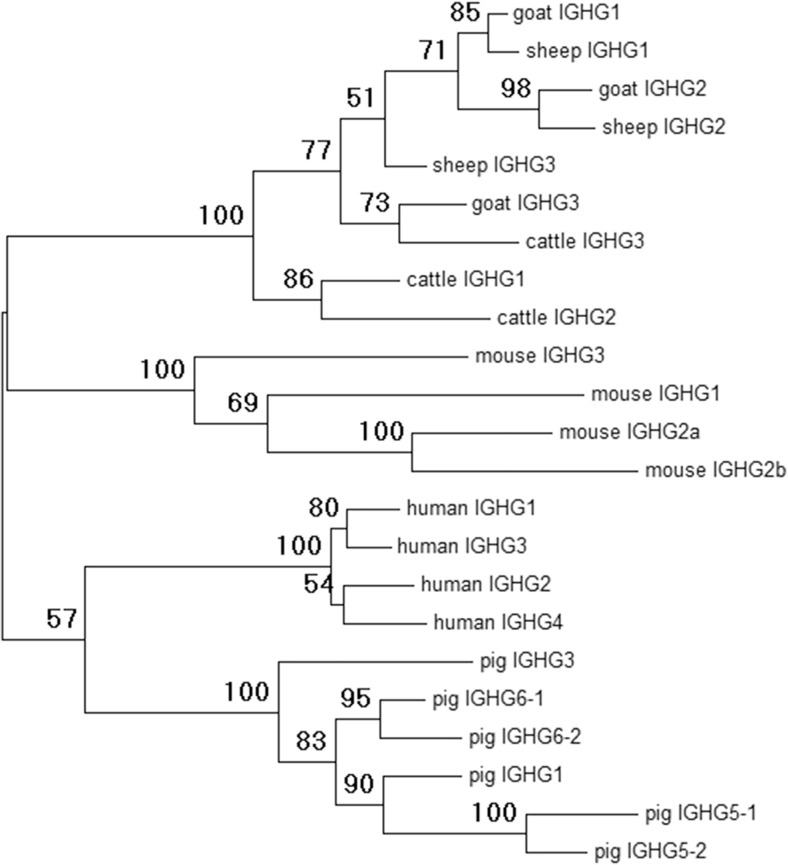Fig. 3.
Phylogenetic analysis of putative IGHG amino acid sequences from goats, sheep, cattle, mice, humans, and pigs. Amino acid sequences for goats, sheep, and cattle were acquired as described in Fig. 2. Pig sequences were acquired from either of two genomic BAC constructs (GenBank accession: AB699686 for IGHG1, IGHG3, IGHG5-1, and IGHG5-2; AB699687 for IGHG6-1 and IGHG6-2) as previously described (Eguchi-Ogawa et al. 2012). Mouse sequences were acquired from a genomic contig (GenBank: D78344) as previously published (Akahori and Kurosawa 1997). Sequence for human IGHG1 was acquired from the genome assembly for chromosome 14 (GenBank: NC_000014.9). The remaining human sequences were acquired from cDNA (IGHG2, AJ250170; IGHG3, AJ390284; and IGHG4, AJ294733). The tree was generated using maximum likelihood based on the Jones-Taylor-Thornton model (Jones et al. 1992) and 100 bootstrap iterations within MEGA6 (Tamura et al. 2013). Nodal bootstrap values are indicated

